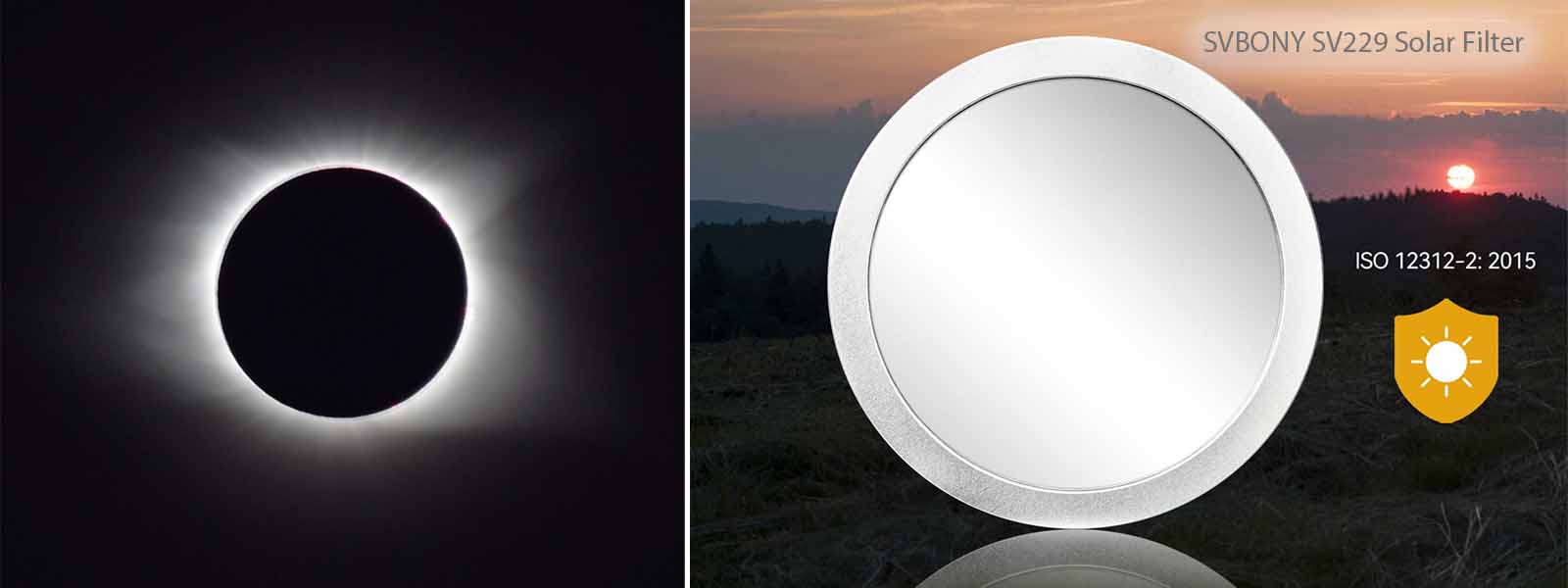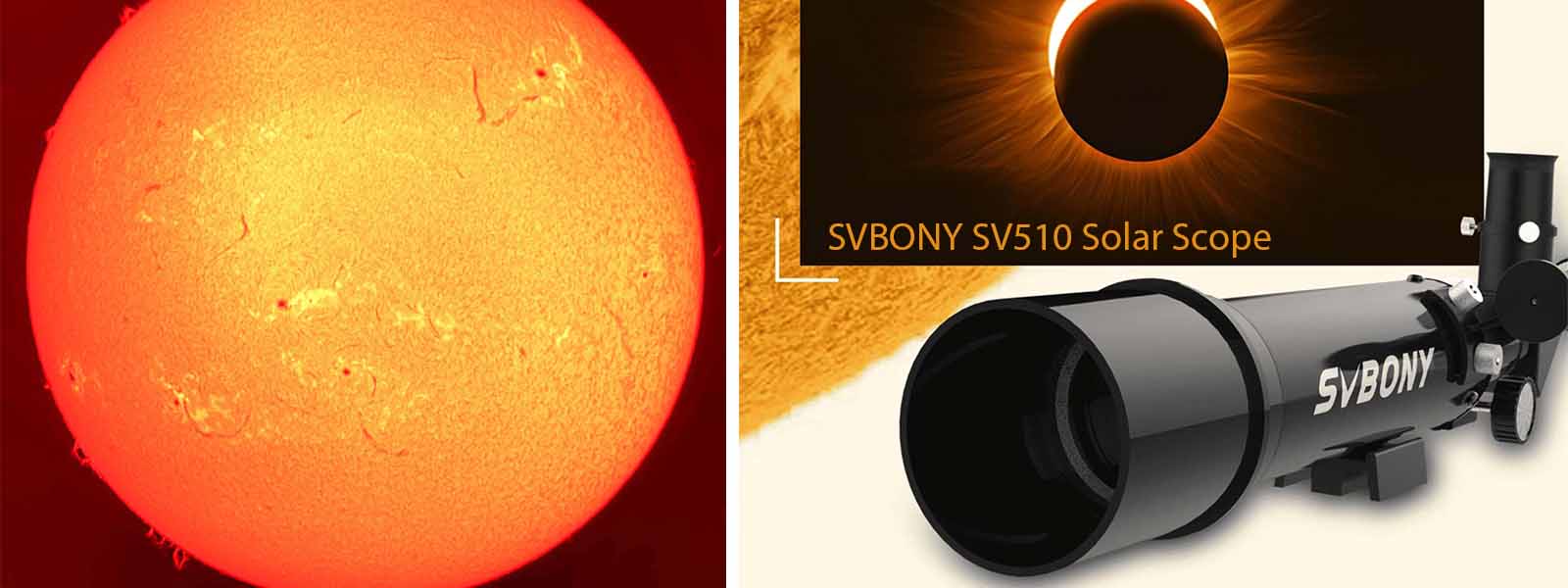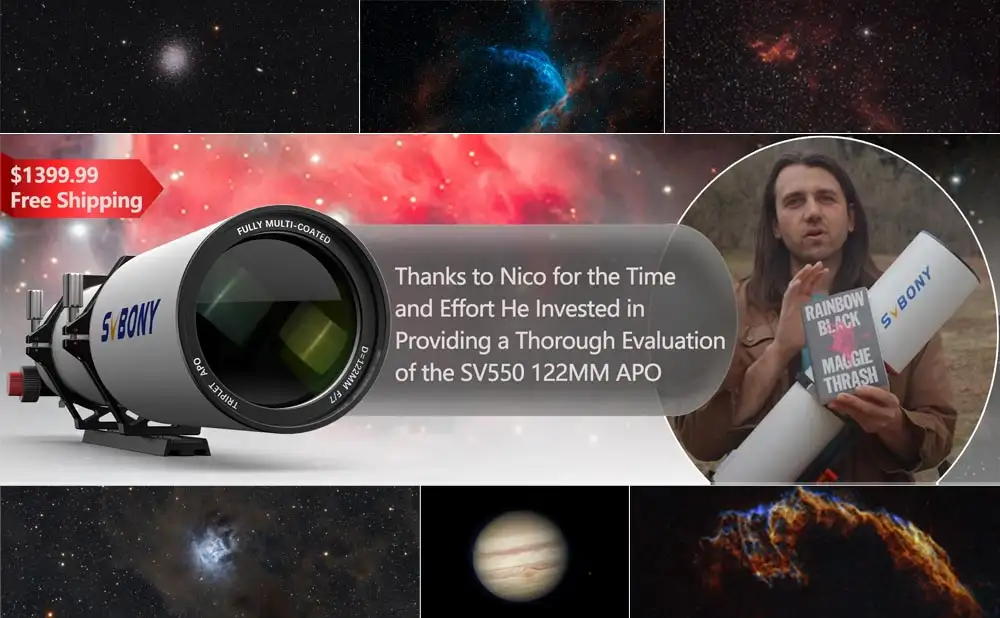Best Solar Knowledges for Beginners 2024
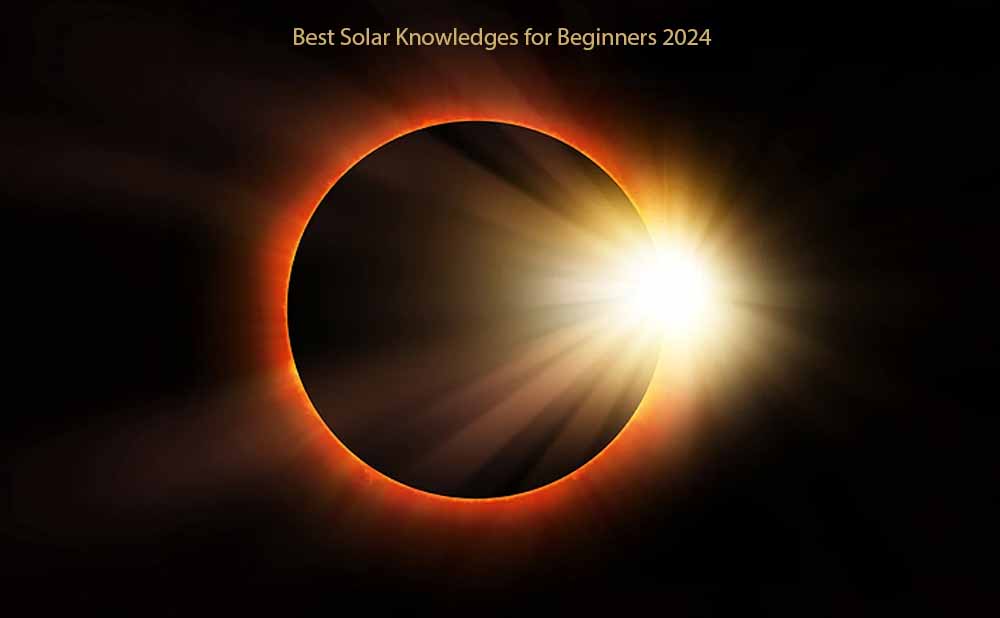
Best Solar Knowledges for Beginners 2024
I believe everyone is looking forward to the upcoming solar eclipse in April this year. How enviable it would be to watch this visual feast locally? Imagine if I were in Asia, the thought of going Flying with heavy equipment to watch a solar eclipse can be a nightmare. But having a lightweight eclipse rig makes it more manageable. In this article, we'll guide you choosing a solar telescope that meets your viewing expectations (whether visual expectations, imaging expectations or both). And I also answer some of the most common questions to help you better prepare for this visual feast.
The first point is that we must clarify a fact, " It's not that the telescope with the larger aperture is better."
As we know, the seeing conditions play an important role in the selection of OTA aperture. Since solar observations are made during the day, they can be done almost anywhere. High humidity, thermals, smoke and low altitude can all affect large-aperture telescopes. In this case, mid-sized OTAs will clearly outperform large OTAs. That is to say, large OTAs will suffer more than mid-sized OTAs due to poorer sky quality. On the contrary, under good seeing conditions, large OTA will provide more viewing details and magnification. So, if you plan to watch in an area with good viewing conditions, you are not restricted by Aperture. But you may have to take this into account if you plan on watching in an area with less than ideal conditions. Totally we’ve found that an aperture of 60mm-80mm is best for average seeing conditions.
A solar telescope produces a cone of light that is focused onto an "image plane" at the back end of the telescope. The size of this image plane and its distance from the objective are defined by the focal length of the system and the apparent size of the object (the Sun).
The second point is to confirm whether your needs are vision only, or vision plus imaging.
Because this purpose directly determines the composition of the telescope you need. Any solar telescope configured for imaging can be used in visual mode. If you choose vision only, just get a smaller blocking filter to reduce the cost of your purchase, when you select vision plus imaging, the smaller blocking filter will have no effect in imaging mode.
On this basis, you need to understand three important concepts, one is "H-alpha", and the other two is "Etalons" and "blocking filters".
What is H-alpha? Simply put, when atoms change energy levels, they can emit light of a specific wavelength. And one of the wavelengths (or more specifically, spectral lines) of hydrogen is around 656.46 nm, existing in the H-alpha form. It is nearly red and can be observed in nebulae - or more importantly for the current topic, in stars like our sun. In the astronomical community, H-alpha is often abbreviated to Ha when written.
What are Etalons? The etalons are the primary filters used in specialized solar telescopes to isolate H-alpha light from the Sun. As opposed to standard astronomical filters, which use coatings to block unwanted light, etalons use two closely placed reflective surfaces that interact so that only light of specific frequencies passes through to the other side. The spacing between these surfaces and the characteristics of the air inside determine which light is allowed to pass through, and these features are used in etalons tuning systems to adjust the wavelengths that pass through.
What are blocking filters? Blocking filters are used in specialized solar telescopes to reject all remaining light beyond the H-alpha wavelength. This is necessary because the etalons transmit harmonics of the desired wavelength. Fortunately, these harmonics are far enough apart that, although the filters in the blocking filter have a relatively large bandpass compared to the etalons, they can block them while still providing a clear view of the H-alpha light.
Third point, special note for beginners: don't expect to see fine detail and/or surface detail on your first viewing.
Looking into a solar telescope is like walking into a dark room. You may have been standing in the sun and your eyes will shrink. Solar telescopes transmit not only a small portion of the light around you, but also a very narrow wavelength of that light. Typically 0.5-0.7 Angstrom at 656.28nm. Your eyes need time to adjust and time to "learn" what they are seeing. When you first walk into a dark room, you see very little and assume there is nothing to see. However, 10 minutes later, you navigate the room and start picking out objects. The harder you work, the more you'll see.
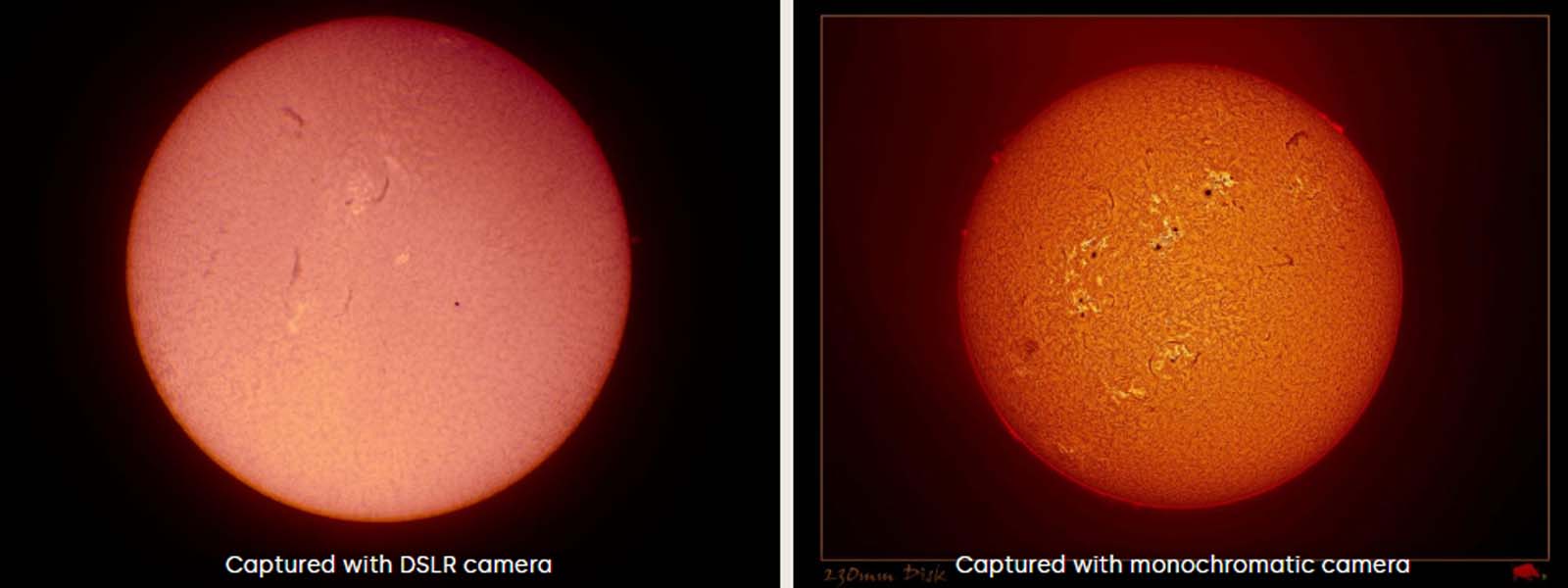
The fourth point is that the most ideal imaging system is a monochrome camera.
Not only are monochrome cameras ideal, they are also simpler and cheaper to use. As they produce sharper images with better resolution, output smaller file sizes, and are more sensitive to light. Monochrome cameras utilize all of the sensor as a photon dump and do an excellent job of defining contrast. Monochrome cameras capture all the incoming light at each pixel – irrespective of color. Since red, green, and blue are all absorbed simultaneously, each pixel can receive up to three times the amount of light. Also, it is important to know that monochrome sensors - unlike color sensors - do not require demosaicing to create the final image.
Conclusion
There are now a variety of devices that can provide a safe, spectacular viewing experience. Equipment suitable for viewing a solar eclipse includes eclipse glasses, sun-safe film and specialized solar telescopes. In addition to these tools for direct observation of the Sun, personal indirect observation is also beginning to gain traction due to the increasing popularity of smart telescopes. These devices have begun to offer specialized solar filters that make imaging the sun and eclipses easier.
For more information on eclipse viewing gear, read our essential eclipse gear article!
https://www.svbony.com/eclipsewatch/
https://www.svbony.com/blog/solar-telescope-filters/
https://www.svbony.com/blog/review-about-sv510-solar-telescope/

